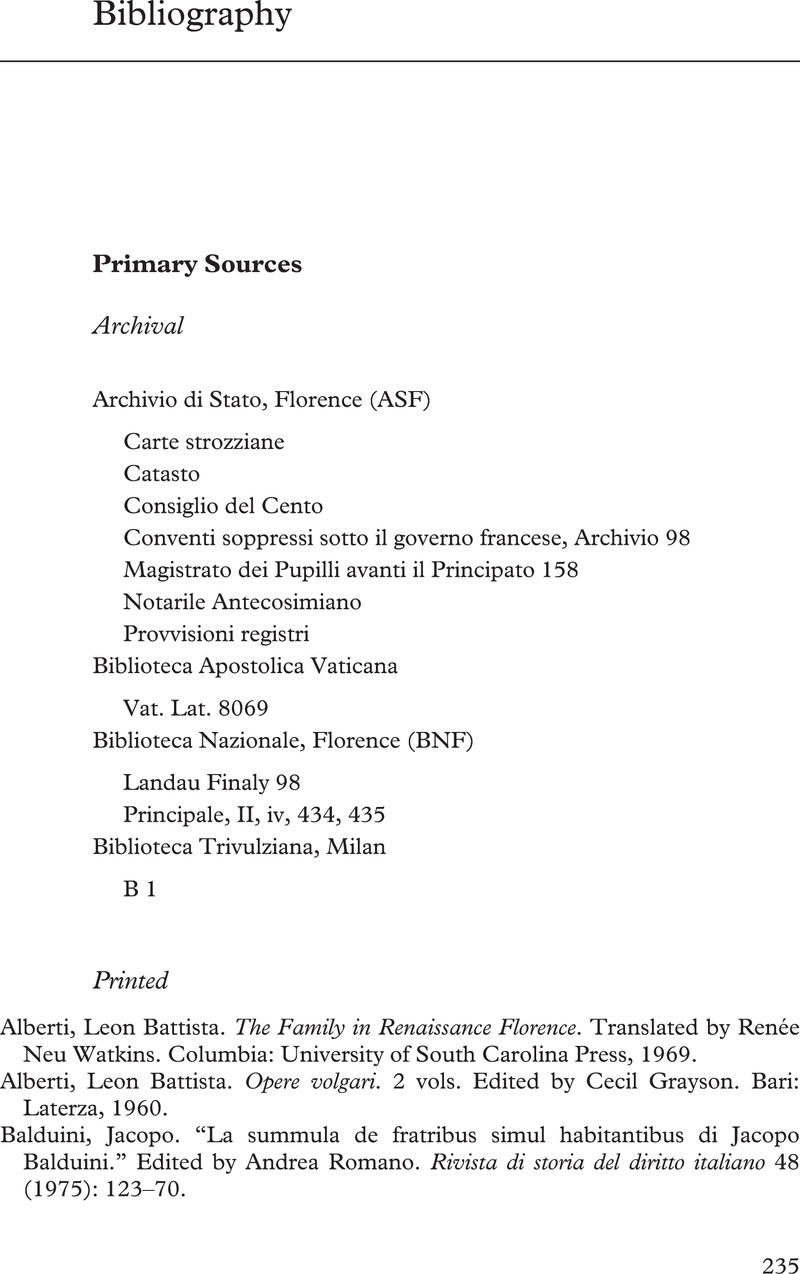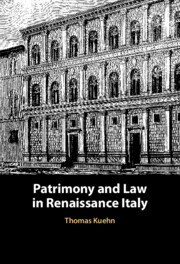Book contents
- Patrimony and Law in Renaissance Italy
- Patrimony and Law in Renaissance Italy
- Copyright page
- Contents
- Acknowledgments
- 1 Introduction
- 2 Bartolus and Family in Law
- 3 The Divisible Patrimony
- 4 Property of Spouses in Law in Renaissance Florence
- 5 Societas and Fraterna of Brothers
- 6 Fideicommissum and Law
- 7 Estate Inventories as Legal Instruments in Renaissance Italy
- 8 Prudence, Personhood, and Law in Renaissance Italy
- 9 Addendum
- 10 Conclusion
- Bibliography
- Index
- References
Bibliography
Published online by Cambridge University Press: 24 February 2022
- Patrimony and Law in Renaissance Italy
- Patrimony and Law in Renaissance Italy
- Copyright page
- Contents
- Acknowledgments
- 1 Introduction
- 2 Bartolus and Family in Law
- 3 The Divisible Patrimony
- 4 Property of Spouses in Law in Renaissance Florence
- 5 Societas and Fraterna of Brothers
- 6 Fideicommissum and Law
- 7 Estate Inventories as Legal Instruments in Renaissance Italy
- 8 Prudence, Personhood, and Law in Renaissance Italy
- 9 Addendum
- 10 Conclusion
- Bibliography
- Index
- References
Summary

- Type
- Chapter
- Information
- Patrimony and Law in Renaissance Italy , pp. 235 - 253Publisher: Cambridge University PressPrint publication year: 2022



